I chose Dare and Hyde..... counties that is. This past weekend revolved around a trip to the OBX for the first pelagic trip of the year. Usually I would start the year with a trip to the OBX and Pungo Lake to catch the swan and goose show but this year was delayed due to weather.
First some local pics from during the work week...
Mourning Dove at Wrightsville - whenever I see a dove on the beach, I always check them thoroughly. Wouldn't it be cool to find the first Zenaida dove north of Florida? They actually have not been seen north of the very southern tip of Florida, but with a recent record of White-crowned Pigeon, why not?
Seeing a report of a Wilson's Warbler on Facebook at Greenfield Lake had me interested enough to go check it out. I had very little to go on as the person who saw it didn't remember where around the lake she got onto it. She gave me a couple possible spots where she tends to go but it's a big lake with a million azalea bushes (only clue in the photo). I went after work one day so I didn't have much time before sunset.
White-breasted Nuthatch is always a good find in New Hanover county. This one must have been blinking when I got the shot.
Orange-crowned Warbler - I actually had a couple of these. The bushes were actually quite alive considering the time of day.
Wilson's Warbler! Bingo. I covered a lot of ground and the fact that I found this needle in a haystack in just a couple hours is pretty amazing. The timing was perfect as the sun was just setting. I have seen on eBird that many people have picked it up since then.
White Ibis at Airlie Gardens
A grumpy looking Great Blue Heron at Airlie
A Blue-winged Teal and American Wigeon have showed up recently at Airlie Gardens.
Sam C called me with a report of White-winged Dove at a local feeder near Greenfield so after getting permission we headed over the following morning. Apparently Jacob and I got there a few minutes too late as Sam witnessed it fly overhead and a good ways down the road. Its probably still there but I don't think the homeowner would appreciate us camping out there so I will wait for a self-found dove instead.
This Black-and-white Warbler was my only consolation.
This Accipiter flew in and scattered any remaining birds. When it flew in it immediately made me thing Sharp-shinned because it was really small, but I see the proportions look better for Cooper's as well as the puffed up under tail coverts. Merlin is calling it a Cooper's too.
I was able to get off work a little early on Friday and made it up to Alligator NWR in Dare County by 4pm or so. For those of you that have never been, Alligator National Wildlife Refuge is the peninsula of land that is sandwiched between the Alligator River to the west and Croatan Sound to the east and is passed through by most people heading to the OBX from points west (Raleigh for example). The refuge mostly sits in Dare County but some of the southern reaches are in Hyde County. Ironically the park is not really known for Alligators but instead the critically endangered Red Wolf.
Red wolves used to roam all around the southeast of the United States but were essentially wiped out by humans or diluted out by cross breeding with Coyotes.
Out of this massive historical range, Red Wolves only now exist in one place in the wild and that is Alligator NWR. Part of the reason they have been successfully reintroduced at Alligator is because the peninsula makes it easier to segregate them from Coyotes which readily interbreed. The remaining Coyotes have been sterilized so that they don't water down the Red Wolf blood line.
I have seen them in the past but unfortunately didn't see any this time.
Northern Pintail are gorgeous ducks.
Northern Shovelers too.
I looked hard for the long staying Snow Bunting that apparently left before I could see it but I stayed on to look for Red Wolves and Short-eared Owls.
The sunset was amazing and I did finally see one Short-eared Owl but it was a mile away in the almost dark so a photo was out of the question.
What can I say about Dare county other than it's the best county for birds in NC and currently has the biggest Top 100 list for any county with 407 species held by Jeff L. By contrast, New Hanover county's very own Sam C has 337 species for his all time county list. Once you go inland the number falls precipitously. For example, Eddie O holds the Wake county all time list at 274.
By land mass, Dare County is no where near the biggest. Dare is #68 on the list of counties by land mass at 383 square miles. By comparison the largest county is Robeson at 949 square miles! However, what Dare lacks in size it makes up for in sprawl and positioning. Basically all of the Outer Banks (OBX) is in Dare County stretching for 120 miles. The only real pelagic birding is based out of the OBX with various ports used as a starting point like Manteo, Oregon Inlet and Hatteras Inlet. In addition, much of the land is undeveloped making it good for our feathered friends. Finally, the county list is so high because of the positioning of the OBX. Vagrant birds from every direction get concentrated when they hit the banks due to the limited land mass and then finding them is easier because of the habitat stunted by the maritime conditions. Some of my best NC birds were seen in Dare including a Yellow-nosed Albatross seen on a pelagic off Diamond Shoals.
The downside to Dare is also one of the upsides, namely the sparse population. The last census had it at only 34k people compared with 210k in New Hanover which is the 2nd smallest county in NC. Why would this be a downside? Well people don't flock to the OBX for cultural attractions or fine dining (the seafood is great but the cooks are not top tier). However, they do flock here to live slow and relax. In the summer months the population can explode due to vacationers but in the winter it is pretty quiet and hotel rooms can be downright cheap. Speaking of which, I headed to my hotel (Comfort Inn Nags Head South) and passed out.
The pelagic trip on Saturday ended up being great for weather and some common winter birds but it wasn't one of those awesome pelagics that rack up the big specialty lists.
The Razorbill numbers were not great with most of them seen close to the inlet.
Even the Northern Gannet numbers were modest. This one was flying with the new bridge at Oregon Inlet in the background.
We did find large flocks of Bonaparte Gulls and Red Phalaropes feeding among huge schools of False Albacore sometimes called Little Tunny or Bonito. Technically I think there may be some differences between those fish but most fishermen use the terms interchangeably.
I managed to get one shot of a False Albacore breaking the surface of the water.
Some of the rafts of Red Phalarope were hundreds strong.
Northern Fulmar - this bird was on the opposite side of the boat and by the time I ran over it was on its way into the sun glare and I only managed a poor out of focus shot before it disappeared.
Red Phalaropes
Ocean Sunfish or Mola Mola - this guy was HUGE!
Manx Shearwater - we had a bunch of these.
Mixed in with the thousands of Bonaparte's Gulls we had a few Little Gulls with obvious dark underwings.
Red Phalaropes - the bills are thick compared to a Red-necked and you can even see some orange on the bills.
Loggerhead Sea Turtle
Northern Gannet
After the pelagic I again headed to Alligator to try for Short-eared Owls but was skunked. The Woodcocks were displaying but good luck getting a pic. I went to Bros for a nice juicy burger and went to sleep early so I could get up early and spend a day slowly birding on the way home.
Blue-winged Teal at the Pea Island Visitor's Center
I love Pea Island on a sunny day with low wind when the ducks pile up near the south dyke. It doesn't happen often, but when it does, it's a photographer's dream. Initially I planned to only walk a little ways out on the dyke and get some photos but I just kept going and eventually hiked the almost 5 mile loop completely around north pond.
Common Gallinules are fairly uncommon on the OBX.
A Peregrine Falcon flew overhead but birds find safety in numbers and the ducks didn't move much.
Female Canvasback
American Coot
Canvasback male.
American Bittern contemplating its own reflection.
Bufflehead female
American Wigeon
Brown Pelican
American White Pelican
Redheads flushed from the sound west of the north pond flew up into a giant flock that streamed over to reposition to south pond.
zoomed in a bit.
A bit more.....
Way zoomed in! Female Redhead.
Ruddy Duck male.
Ruddy Duck female.
Greater Scaup - note the lack of a peaked head, its nice and round.
Another Greater Scaup - the light was not as good over on the west side of the pond.
Red-winged Blackbird
Northern Pintail
Green-winged Teal - this photo almost looks like two photos stitched together.
Cropping out the shoreline makes it look more normal.
After that long hike I started to get hungry so I headed up to get some eats and then got back on the road for my next destination - Hyde County!
And what sits squarely in the middle of Hyde County? Lake Mattamuskeet! Mecca for anyone looking for ducks in NC. Not to mention Pungo Lake which barely crosses the northwest reaches of the county. Some fun facts, Hyde County is the 24th largest county in NC by land mass at 612 square miles but the population is shy of 6k people! It is a secluded and quiet county for sure with mostly farmers calling it home. One thing I love about small towns in NC is that when you drive through you get the feeling everyone knows each other and people from different racial backgrounds seem to get along really well. I really should have held my lunch until I got into Hyde so I could try something local but usually I just blow through the small towns like Englehard. Next time I head through Englehard I am resolving myself to try one of the local spots for food.
Anyhow, the problem with Mattamuskeet is that it is hard to get there in the morning when the light is good so every time I go I seem to end up with horrible viewing conditions for the ducks. In the afternoon the main duck impoundment on the south central end of the lake is facing directly into the sun. So I headed over to the bird blind on the west side of the impoundment and scanned through looking for a needle in a haystack. I eventually found what I was looking for but it was super far away actually closer to the north road.
Super cropped photo of an Eurasian Wigeon with the red head and cream forehead.
I didn't linger too long because I really wanted to spend the afternoon at Pungo Lake looking for something rare and then hoping for a Snow Storm. The Pungo Snow Storm is a phenomena that happens when 10,000 or so Snow Geese lift off from Pungo Lake and then amass over some farm fields just before dark where they eventually slowly come down like huge flakes of snow covering the fields.
I found a wintering White-eyed Vireo but couldn't rustle up anything else of note.
Turkey Vulture
As the sun started setting, I headed back out the refuge and positioned myself in the entrance fields on Pat's Road in Pantego where a couple other locals had said the geese had recently landed.
Maybe a little north of where the red dot is here.
There were a few Snow Geese already in the fields.
And tons of Tundra Swans.
We started get worried that the Snow Goose flock decided to go north of the lake instead of where we were. I had set up my camera on a tripod in the back of my truck bed to take some video when this happened......
A flock of 7 Sandhill Cranes lifted off from a nearby field that was previously hidden and I had to struggle to get my camera on them as it was mounted on the tripod but I managed to get this shot as they flew.
Sandhill Crane - another 3 flew by a few minutes later for a total of 10! Not a bad number for NC.
Right after that and as the sun was setting a few small flocks of Snow Geese started to come in.
A Ross' Goose was hiding in one of these small flocks. Note the smaller goose with the tiny bill.
Ross's Goose on left with Snow Goose on right.
Then I noticed huge clouds of Snow Geese lifting off the lake in the distance start to aggregate into one massive cloud and it started to move in our direction!
Pictures never do it justice because they just look like specs.
So I set up the camera for video and spent the next 30 minutes in awe of a truly amazing show.
The staging process of the geese flying up and over was amazing, the geese flock circling like a plague of locusts. And eventually just before it got dark they started to snow down into the field right next to us! What luck. Apparently they do move around so its hard to say exactly where they will decide to land.
The drive home was uneventful, I listened to Park Predators one of my favorite true crime podcasts.
Great times....
What counties will be in store this weekend? Maybe a run to the mountains is in order!








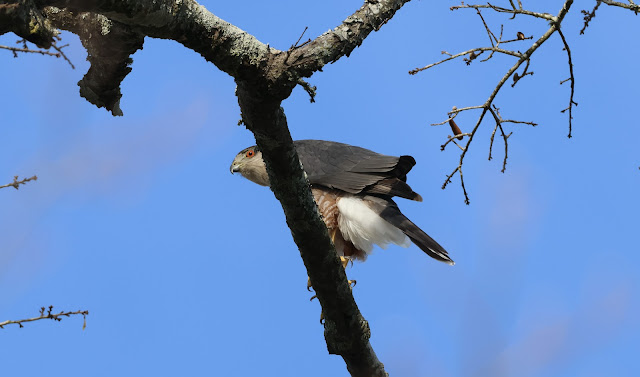













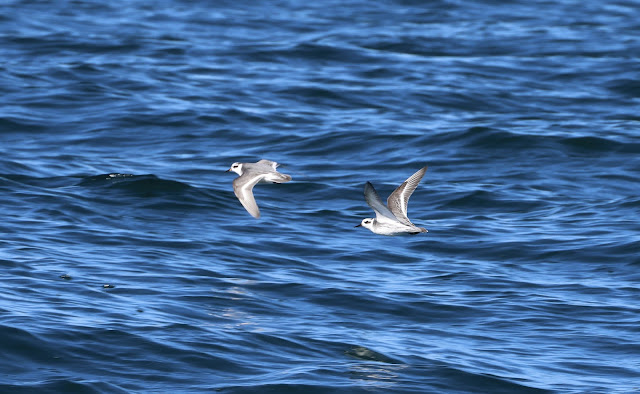





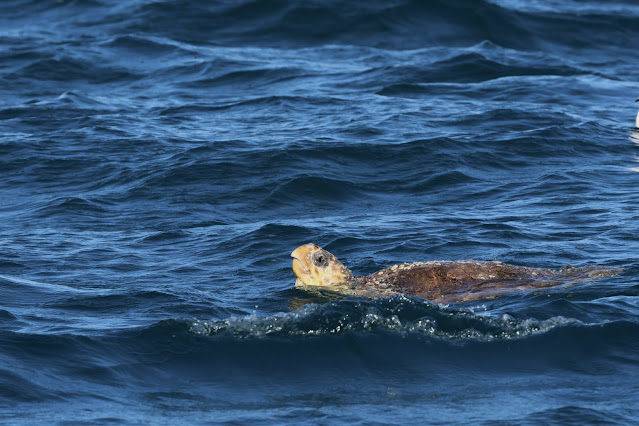





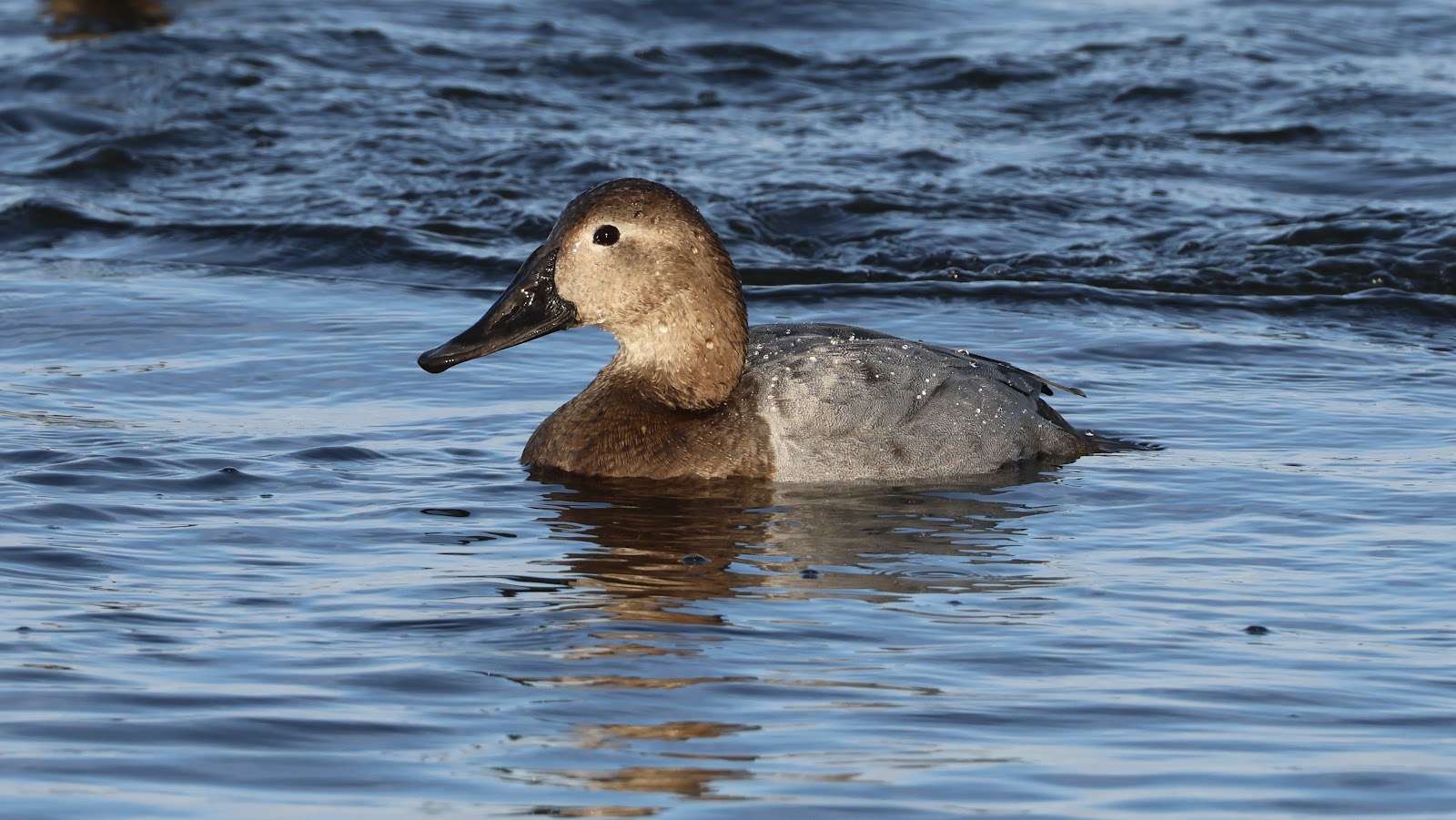





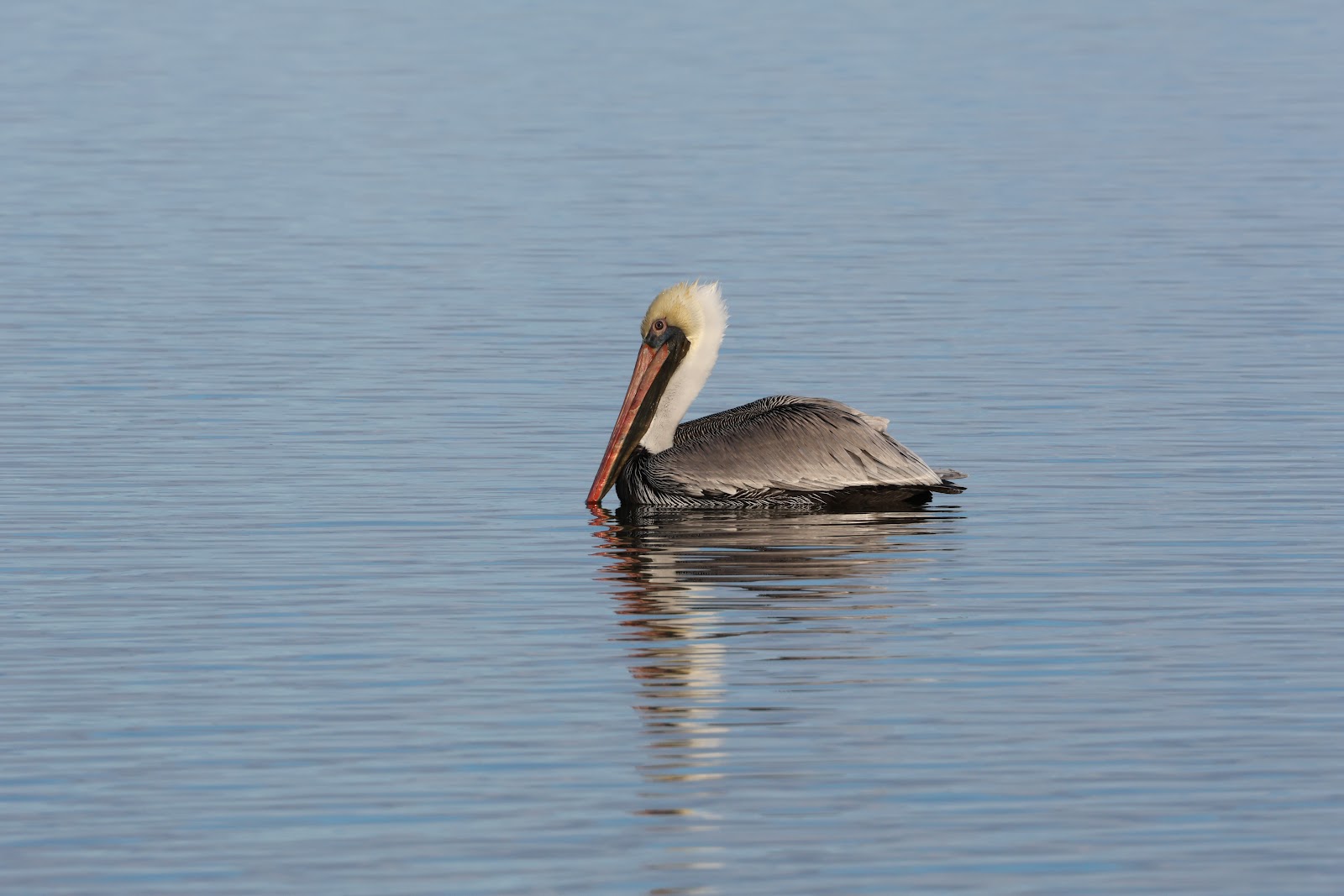











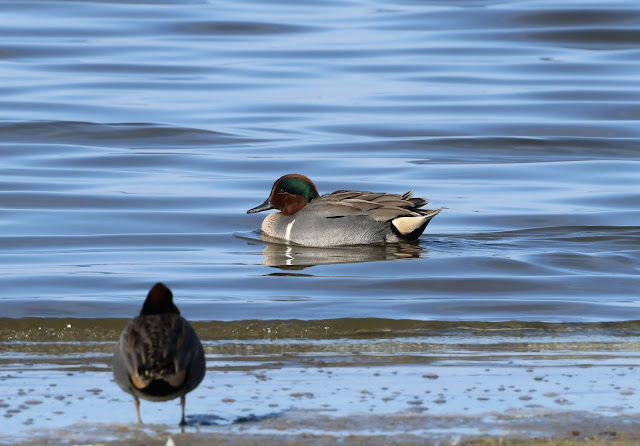














No comments:
Post a Comment